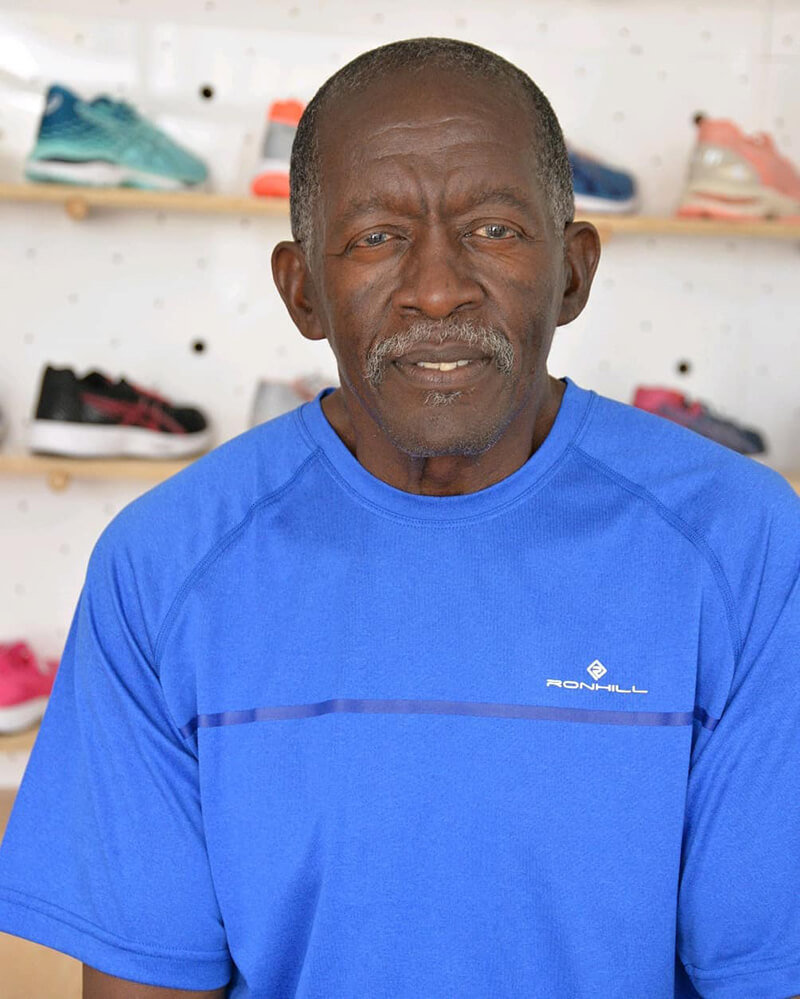
If you’ve never met him, it’s very easy to bump into him and not recognise the greatness behind this unassuming mzee. On any given Thursday morning, you will find Jimmy Beauttah, known to many simply as Coach Simba at the Nyayo National Stadium raring to go.
With his signature look; training tracks, dark glasses, two stopwatches and a whistle hanging on his neck, there is nothing that tells you that he has coached 8 World Championship medals, 3 Olympic medals and 2 Commonwealth Games medals. Yet, it’s that demeanour that has kept him grounded and always willing to help athletes become the best version of themselves.
Few sportsmen his age are still actively coaching. Not him. Having retired from active high-performance coaching in 2008 having accumulated over 30 years of experience, coach Simba joined the Run Beyond team and is now helping recreational runners go back to the basics of running and learn the right way of doing it.
But isn’t running quite simple
The first time I met Coach Simba was last month at the Nyayo Stadium for a training session. I had no idea who he was as I politely said good morning, waved and went on with my warming up jog on the tracks. I was keeping busy as I waited for the rest of the team to arrive for the weekly Run Beyond training sessions which he facilitates.
When our session began shortly after, I soon learnt that he had been watching my running and already, he could tell that my running was off. There were some basics that I wasn’t doing right. My stepping was wrong, I wasn’t landing on my heel then carving my foot to the tip of my toes as the other landed on its heel. Also, I wasn’t springing, instead, I was bending my knees too much. Finally, I was swinging my hands wrong and instead of my hands swinging by themselves, I was moving my upper torso too much. That assessment alone had taken him less than 10mins of observing me run that morning before our training.
I soon learnt that I, like countless other recreational runners, miss out on the basics of running; be it our form, our stepping, or how we swing our arms when we begin our journey into running. II have been running since 2017. And just like many of us, I did not approach anyone for help. Instead, I bought the shoes, the outfit and just took off. It was not until almost a year into my running that I joined a running club. By then, my running technique though not right was ingrained in my brain. And I was quite ok until he pointed out why this, with time, will become a problem for me down the road.
Unlearning that and learning the right way to run has been one of the hardest things I’ve had to do. So, what are some of the things that recreational runners struggle with, I later asked him?
Going too far too soon.
As he noted, many runners accumulate a lot of mileage too soon. He cautions against this. His advice,
“Get there gradually when your body is also there with you, not when your body is not there. If you run beyond your body’s capability, your body needs a lot to recover”
Proper running mechanism
There are a lot of recreational runners that Coach Simba encounters all the time, sometimes even when he is not coaching and is just taking a walk in his neighbourhood, in the park or in Karura forest. There are some he takes one look at and can tell from their running, they are in pain.
“When running, you are supposed to enjoy, it’s not torture”, he counters.
He attributes this to the lack of a proper running mechanism. Most new runners do not have knowledgeable people who can offer them advice on the basics which, as he noted, might seem simple but are not. Accumulating over time, an improper running mechanism often leads to recurring injuries.
Many athletes and recreational runners have to deal with an injury at some point, however, most can be avoided. Adopting a proper running technique is one of the ways to minimize your risk of injury, he advises.
He had some recommendations both for beginners as well as those who consider themselves veterans. Join a running club. Most running clubs retain coaches who are available to train new or old runners on the right running technique as well as advise on the right gear or any other information that will make one’s running enjoyable. Another alternative is sports stores. Some stores retain a coach in the team. Those that don’t have ideas on coaches one can seek advice or training from.
Before the COVID pandemic, he had put together an elaborate training program that entailed meets at Karura forest every Saturday for things that one would normally not do when alone such as exercises and routines of running. The sessions at Nyayo Stadium are a way of slowly building on a full training program that he hopes will benefit many runners to run for as long as he has.
Coach Simba’s age is just shy of 70. He still runs and practices Shotokan, a discipline he tells me he has practised since he was 10 years old.